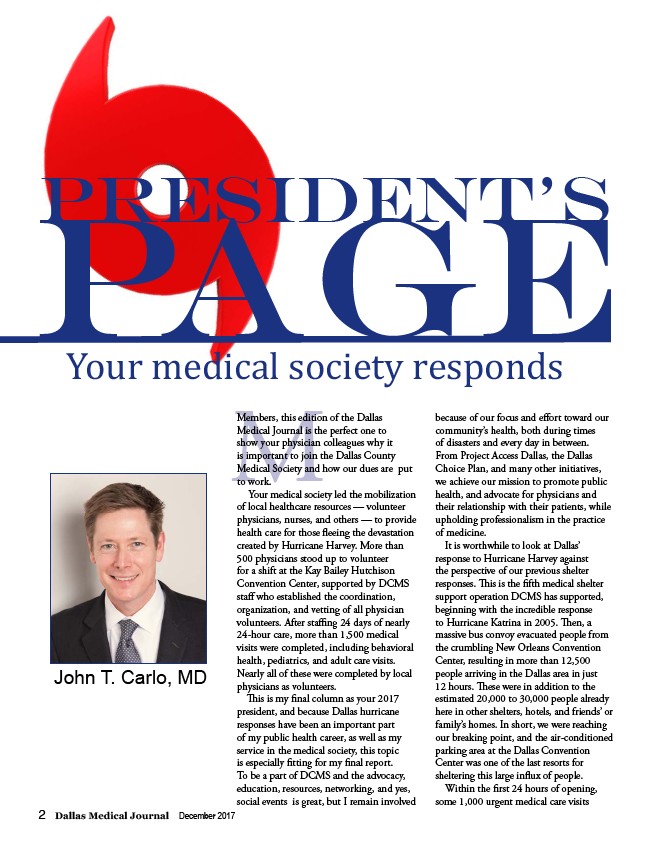
President’s Page
Your medical society responds
M
2 Dallas Medical Journal December 2017
Members, this edition of the Dallas
Medical Journal is the perfect one to
show your physician colleagues why it
is important to join the Dallas County
Medical Society and how our dues are put
to work.
Your medical society led the mobilization
of local healthcare resources — volunteer
physicians, nurses, and others — to provide
health care for those fleeing the devastation
created by Hurricane Harvey. More than
500 physicians stood up to volunteer
for a shift at the Kay Bailey Hutchison
Convention Center, supported by DCMS
staff who established the coordination,
organization, and vetting of all physician
volunteers. After staffing 24 days of nearly
24-hour care, more than 1,500 medical
visits were completed, including behavioral
health, pediatrics, and adult care visits.
Nearly all of these were completed by local
physicians as volunteers.
This is my final column as your 2017
president, and because Dallas hurricane
responses have been an important part
of my public health career, as well as my
service in the medical society, this topic
is especially fitting for my final report.
To be a part of DCMS and the advocacy,
education, resources, networking, and yes,
social events is great, but I remain involved
because of our focus and effort toward our
community’s health, both during times
of disasters and every day in between.
From Project Access Dallas, the Dallas
Choice Plan, and many other initiatives,
we achieve our mission to promote public
health, and advocate for physicians and
their relationship with their patients, while
upholding professionalism in the practice
of medicine.
It is worthwhile to look at Dallas’
response to Hurricane Harvey against
the perspective of our previous shelter
responses. This is the fifth medical shelter
support operation DCMS has supported,
beginning with the incredible response
to Hurricane Katrina in 2005. Then, a
massive bus convoy evacuated people from
the crumbling New Orleans Convention
Center, resulting in more than 12,500
people arriving in the Dallas area in just
12 hours. These were in addition to the
estimated 20,000 to 30,000 people already
here in other shelters, hotels, and friends’ or
family’s homes. In short, we were reaching
our breaking point, and the air-conditioned
parking area at the Dallas Convention
Center was one of the last resorts for
sheltering this large influx of people.
Within the first 24 hours of opening,
some 1,000 urgent medical care visits
John T. Carlo, MD